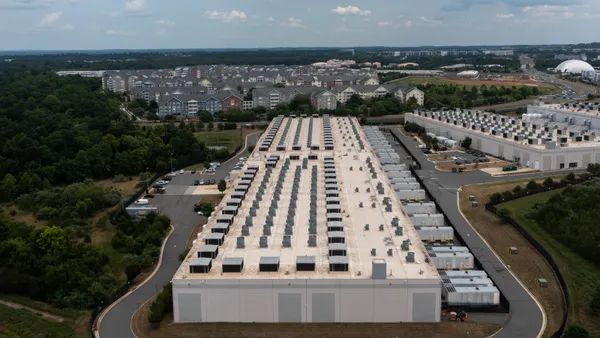UPDATE: Nov. 7, 2018: Haitham Hijazi, director of the Prince George's (Maryland) Department of Inspections, has submitted his resignation, opting for a Nov. 30 retirement date as investigators continue to scrutinize National Harbor's permitting and inspection process, The Washington Post reported. Two county officials alleged that Hijazi, who will be out on leave until his official retirement date, wanted to retire rather than face the possibility of termination.
Nicholas A. Majett, the county's chief administrative officer, will take over for Hijazi until the next county executive is sworn in on Dec. 3.
According to The Post, Hijazi won over members of the local business community during his tenure as county inspection chief by eliminating some of the red tape involved in the permitting process.
Dive Brief:
- Now that an independent electrical engineer has determined that the cause of a severe electrocution injury at the $1.4 billion MGM National Harbor in Prince George's County, Maryland, was the result of faulty wiring installation, county authorities, assisted by the FBI, have widened the scope of their investigation to include potential problems in the design, permitting, construction and inspection processes, in addition to possible public corruption, The Washington Post reported.
- In June, a 6-year-old child was electrocuted severely as she was swinging on a lighted handrail. She is still in the hospital as a result of those injuries. Forensics Analysis & Engineering's report indicated that the handrail's wiring work was "terrible" and also identified other nearby lighting installations with wiring problems. Those were shut off until they are repaired and have passed building code inspections.
- Prince George's County building officials said the unnamed electrical contractor that performed the work and third-party inspector that approved it have been disciplined and that the substandard work was limited to one area. The county has ordered the MGM to evaluate all of its electrical systems and associated hardware during the next year "with priority given to areas where problem contractors worked." The Whiting-Turner Contracting Co. was the general contractor for the project.
Dive Insight:
Whether the work relates to electrical, structural or any other element of a building, contractors have a responsibility to execute their work with professionalism and according to the specifications. Contractors are usually responsible for the cost of repairs of defects or errors for a certain period of time as well, also known as a warranty.
Although the cause has not yet been determined for two cracked steel beams at the $2.2 billion Salesforce Transit Center in San Francisco, the owner, the Transbay Joint Powers Authority, has said the project — which only opened in August — is still under warranty and that the cost of any repairs will be the responsibility of general contractor Webcor/Obayashi, not local taxpayers.
A rush to meet a schedule deadline or attempts to keep costs low are some of the reasons quality can be overlooked during the construction process, but defects usually come to light at some point, and the fix is often more expensive than doing the job right in the first place. Eric Olson, safety director of St. Louis-based Western Specialty Contractors, told Construction Dive in September that a solid quality control program that is documented during construction can help aid in potential future litigation if there are questions about proper installation and, of course, help save money in the long term. “Performing the same work a second time for free,” he said, “increases employee exposure for little to no gain.”













